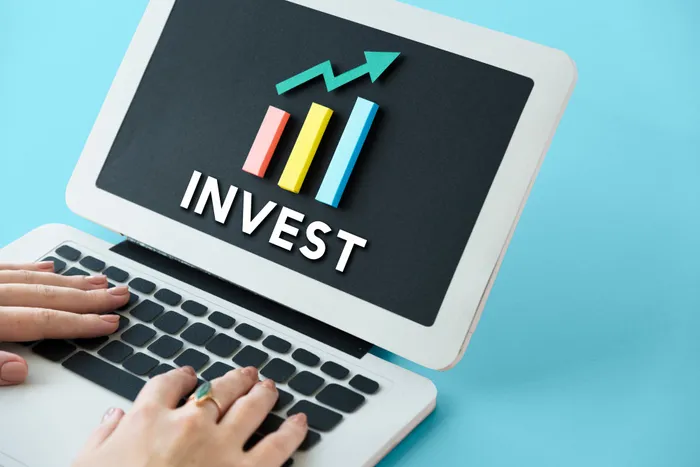Words on wealth: Investors are benefiting from lower fund fees

Investors are voting with their feet when it comes to investments in more expensively priced funds.
A while ago, I compared investment fees in retirement annuities, looking at their impact on a final retirement lump sum. This was prompted by the claim by Sygnia, contested by the Advertising Regulatory Board, that “you could be losing as much as 60% of your retirement savings to fees” (See “Words on Wealth: Why Sygnia is right and wrong about RA costs” – IOL).
I found, as others have done before me, that fee differences can have a significant impact on compounded returns over 40 years, especially if, apart from investing in a high-fee fund, you use an adviser that charges a percentage of assets under management. Comparing this outcome with investing in a low-fee fund directly, with about the same pre-cost return, the difference was startling, and although I didn’t get to Sygnia’s 60% figure in my calculations, I did get to more than 40%.
In a future column, I will look at advisers’ fees, which I believe are generally too high, but here I focus on fund fees, which, I am happy to say, are coming down. This is according to a senior fund analyst at Morningstar South Africa, Michael Dodd, citing a recent Morningstar study.
Let’s quickly go over the fees you pay in a retirement or discretionary investment via an adviser.
1. Adviser fee: Some advisory practices can charge an upfront fee of about 3%, and can legally charge up to 1.5% (excluding VAT) on assets under management.
2. Platform administration fee: Your adviser will typically work through an investment platform, or lisp (linked-investment service provider) which offers a range of funds. Its fees may be tiered so that the more you invest, the lower the fee, but bank on between 0.5% and 1%.
3. Fund fee: this is the fee deducted from the fund’s returns that cover all the fund manager’s investment costs. Asset managers have different fee classes according to the type of investor. For a retail investor investing directly, the fee will be higher than for an institutional investor or lisp, which get discounts through economies of scale.
It’s this third fee, that charged by the fund, that was the subject of the Morningstar study. The fee obviously depends on how much work goes into managing the investment, so it stands to reason that a passive fund (one that tracks an index, with no analytical input from the fund manager) attracts lower fees than an active one, and that multi-asset funds, which allocate money across asset classes, are more expensive to run than a pure equity or pure bond fund, for example.
Not that long ago (about 15 years back, just after the global financial crisis, when markets boomed on the back of easy money flooding the markets) many actively managed funds had fees of more than 3%. This included the performance fee asset managers awarded themselves for generating a return above their benchmarks. It is doubtful whether a fund would be able to charge that today.
Morningstar study
Dodd says the trend of declining fund fees is one that is observable and consistent across most global markets.
“Both in South Africa and globally, there are several factors that have played a role in lowering fees. These include the continued growth of passive investing, increased competition among asset managers and an evolution in the economics of advice. This has been a positive for investors, who have benefited from these dynamics and have saved money in fund fees as a result,” he says.
The Morningstar study analyses fund fees to the end of 2023, using a fund’s retail fee class and its total expense ratio (TER). This excludes transaction costs, which, if added to the TER, reflect a fund’s total investment charge.
Looking at asset-weighted fees, which are those paid by retail investors, the average fund TER in 2023 was 1.15%. Breaking that down, the average active fund TER was 1.17% and the average passive fund TER was 0.57%, giving an average difference of 0.6% between active and passive funds.
Dodd reminds us that, compared with the US, where passive funds dominate the investment industry, actively managed funds predominate in South Africa, making up the lion’s share of the 1 500-odd unit trust and exchange traded funds on the local market.
Apart from active and passive, the study divides the funds into three broad categories: equity funds, fixed-income funds (which comprise mainly bond funds) and allocation funds, which we know as multi-asset funds (see graph).
“Due to the regulatory framework governing retirement savings in South Africa, allocation funds have the largest market share of the local fund market. Active allocation funds are the most expensive South African fund category, with an average TER of 1.39%. Active equity funds are only slightly cheaper, with an average TER of 1.35%, while the average passive equity fund TER sits at 0.61%. Fixed-income funds are generally cheaper than allocation and equity funds, with the average TER for an active fixed-income fund being 0.75%,” Dodd says.
While the declining fee trends are generally observable across the different fund categories, Dodd said a few interesting observations could be made from the data:
• It remains true that multi-asset portfolios cost you more than single asset class portfolios.
• Within the equity categories a South African equity fund costs you less than a global equity fund.
• Investors are voting with their feet when it comes to investments in more expensively priced funds.
* Hesse is the former editor of Personal Finance.
PERSONAL FINANCE